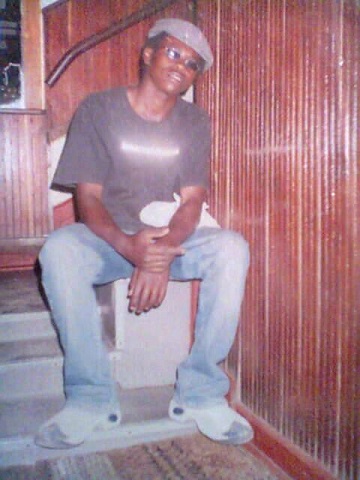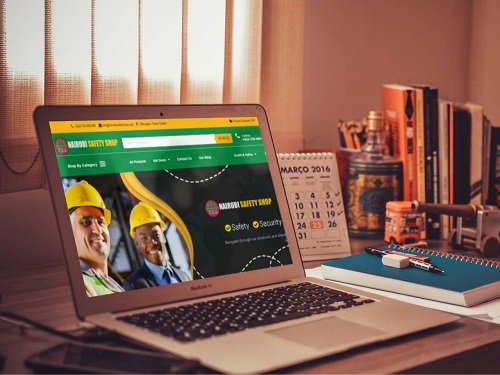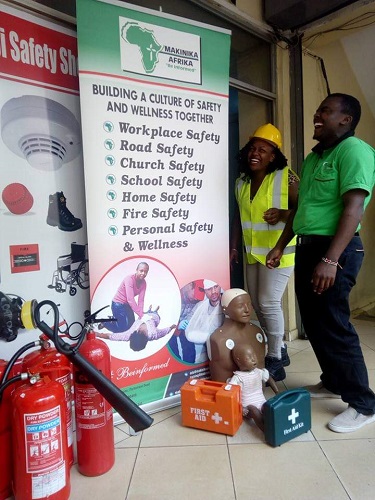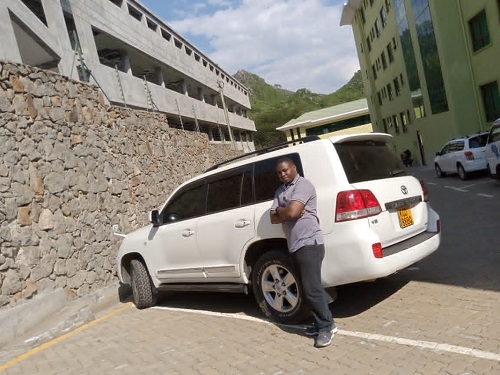A culture of safety and wellness at the workplace is not a day activity, it is built over time and it’s both an individual and collective responsibility. This requires that a Positive Mental Attitude (PMA)be inculcated into the staff through motivation, appreciation, acknowledgement, awards and recognition.
Over my career as a safety instructor, I have trained more than 10,000 individuals in hundreds of companies, corporations, institutions, NGOs, Government ministries, Churches, Households and I have noted that one senior staff who is mindful of safety is able to influence this culture to all.
Addressing workplace stress which is also a collective challenge is key in building this safety culture. A good example of companies I have trained, involved in or been part of the steps to a safety culture is Crown paints, Unilever, Villa Rosa Kempinski, Safari Park Hotel, USIU University, Finlays flowers, Nampak Ltd and KNH and in most of these institutions, one passionate staff is able to influence the whole environment.
In a strong safety culture, everyone feels responsible for safety and pursues it on a daily basis; employees go beyond “the call of duty” to identify unsafe conditions and behaviors, and intervene to correct them. For instance, in a strong safety culture any worker would feel comfortable walking up to the plant manager or CEO and reminding him or her to wear safety PPE. This type of behavior would not be viewed as forward or over-zealous but would be valued by the organization and rewarded. Likewise coworkers routinely look out for one another and point out unsafe behaviors to each other. Workers carefully observe and obey the safety rules and take it as their own.
A company with a strong safety culture typically experiences few at-risk behaviors, consequently they also experience low incident rates, low turn-over, low absenteeism, and high productivity. They are usually companies who are extremely successful by excelling in all aspects of business and excellence.
Creating a safety culture takes time. It is frequently a multi-year process. A series of continuous process improvement steps can be followed to create a safety culture. Employer and employee commitment are hallmarks of a true safety culture where safety is an integral part of daily operations.
A company at the beginning of the road toward developing a safety culture may exhibit a level of safety awareness, consisting of safety posters and warning signs. As more time and commitment are devoted, a company will begin to address physical hazards and may develop safety recognition programs, create safety committees, and start incentive programs.
Top management support of a safety culture often results in acquiring a safety director, providing resources for incident investigations, and safety training. Further progress toward a true safety culture uses accountability systems. These systems establish safety goals, measure safety activities, and charge costs back to the units that incur them. Ultimately, safety becomes everyone’s responsibility, not just the safety director’s. Safety becomes a value of the organization and is an integral part of operations. Management and employees are committed and involved in preventing losses. Over time the norms and beliefs of the organization shift focus from eliminating hazards to eliminating unsafe behaviors and building systems that proactively improve safety and health conditions. Employee safety and doing something the right way takes precedence over short term production pressures. Simultaneously, production does not suffer but is enhanced due to the level of excellence developed within the organization.
Companies can organize internal safety competitions among the workers, external competitions with other companies, having quarterly or monthly awards to the best safety ambassadors at the workplace and those staff who did something extra ordinary to protect , prevent and respond to incidents .
Proper staff orientation and briefing, regular awareness/sensitization and visual aids such as safety signage, charts, posters, regular mails and social media tips helps build this culture as it instills the information in all the recipients.
You cannot build this culture by only training to meet the OHS regulations. Every staff, shareholder and individual with regular involvements at the workplace should be involved in the safety procedures right from the initial stages of designing/developing to implementation so that they own it up and the guidelines should be very clear right from signing at the entrance.
The lead person who is also the Safety champion at the workplace should develop trust with all participants of this process. Trusting is a critical part of accepting change and management needs to know that this is the bigger picture, outside of all the details. Trust will occur as different levels within the organization work together and begin to see success. An ongoing performance measurement and feedback system helps to measure the progress and develop more trust.
Such a culture is about a friendly environment creation where everybody is involved and is part of the process not just setting up rules and strictly enforcing them.
Example, an OHS policy should be shared to all and allow all staff to give their views. The process of hazards identification and risk assessment should be all inclusive.
BASIC GUIDELINES
- Define safety responsibilities for all levels of the organization, e.g.safety is a line management function.
- Develop upstream measures, e.g.number of reports of hazards/suggestions, number of committee projects/successes, etc.
- Align management and supervisors through establishing a shared vision of safety and health goals and objectives vs. production.
- Implement a process that holds managers and supervisors accountable for visibly being involved, setting the proper example, and leading a positive change for safety and health.
- Evaluate and rebuild any incentives & disciplinary systems for safety and health as necessary.
- Ensure the safety committee is functioning appropriately, e.g., membership, responsibilities/functions, authority, meeting management skills, etc.
- Provide multiple paths for employees to bring suggestions, concerns, or problems forward. One mechanism should use the chain of command and ensure no repercussions. Hold supervisors and middle managers accountable for being responsive.
- Develop a system that tracks and ensures the timeliness in hazard correction. Many sites have been successful in building this in with an already existing work order system.
- Ensure reporting of injuries, first aids, and near misses. Educate employees on the incident pyramid and importance of reporting minor incidents. Prepare management for initial increase in incidents and rise in rates. This will occur if under-reporting exists in the organization. It will level off, then decline as the system changes take hold.
- Evaluate and rebuild the incident investigation system as necessary to ensure that it is timely, complete, and effective. It should get to the root causes and avoid blaming workers.
Reinforcement, feedback, reassessment, mid-course corrections, and on-going training is vital to sustaining continuous improvement.
Inviting an external (private) safety expert to view, review and share with your safety team also helps them widen their scope. Some of the companies that have severally involved me set aside 30mins-1hr session to share with their safety representatives and group of staffs where I share on the best possible practices and take them through the process of culture building.
As an Ambassador of Safety and wellness, my mission, passion and commitment is to help companies and individuals to build a culture of safety and wellness everywhere at all times. A safety culture is an ideology that I live for and where need be, can die for.



















